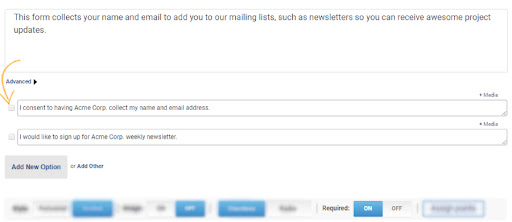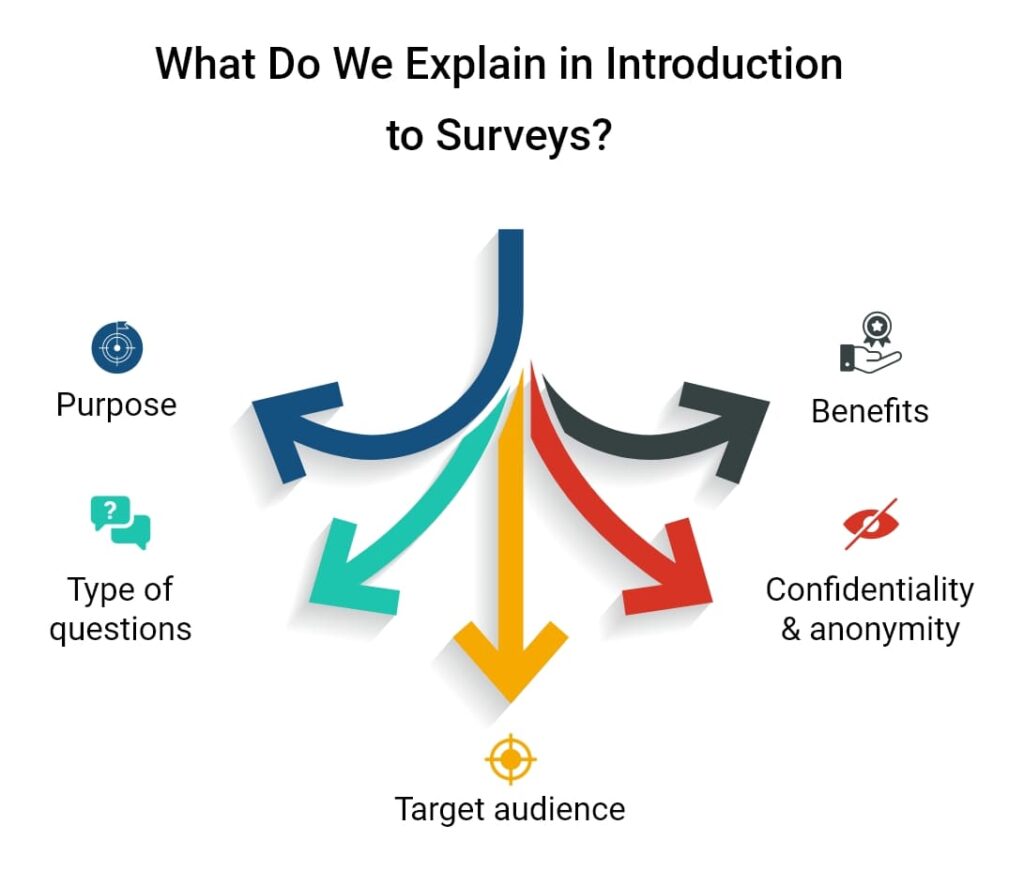
Survey research is a powerful tool for gathering insights and feedback from your target audience. But if your survey introduction is lackluster or confusing, it can significantly impact the quality of the data you collect. That’s why it’s essential to master the art of crafting effective survey introductions that engage your audience and set the tone for the rest of the survey.
A successful survey introduction is like a firm handshake; it establishes trust and communicates the value of the survey to the participant. It sets expectations for what the survey will cover, why it matters, and how their feedback will be used. An effective introduction should grab the respondent’s attention, motivate them to participate, and guide them through the survey questions.
In this blog, we’ll explore the key elements of an effective survey introduction, including how to hook your audience, avoid common pitfalls, and ensure your survey questions align with your research objectives. With these tips, you can create introductions that set the stage for collecting high-quality data and actionable insights. So, let’s dive in and master the art of crafting survey introductions that deliver results.
What Is a Survey Introduction?
A survey introduction is the opening section of a survey questionnaire that serves as an introduction to the survey itself. It typically includes a brief explanation of the purpose and importance of the survey, as well as an invitation to participate. This is a critical part of the questionnaire as it sets the tone for the rest of the survey, establishes expectations, and motivates the respondent to participate.
An effective introduction to a survey should be clear, concise, and engaging. It should communicate the value of the survey to the respondent and explain why their feedback is important. The introduction should also provide any necessary context or background information that will help the respondent understand the survey questions and provide accurate answers.
A well-crafted introduction can increase the response rate and ensure that the data collected is accurate and actionable.
What are the Benefits of Survey Introduction ?
The survey introduction is a critical component of a survey questionnaire as it serves several important purposes and offers several benefits.
First, the introduction is important because it sets the tone for the rest of the survey. It provides the first impression of the survey to the respondent, and a well-crafted introduction can help engage the respondent and increase their motivation to complete the survey.
Second, the introduction provides context and establishes expectations for the survey respondent. It communicates the purpose of the survey, the type of questions that will be asked, and the value of the data being collected. This helps to ensure that respondents understand the survey and are more likely to provide accurate and useful responses.
Finally, an effective introduction to survey can help increase response rates. By clearly explaining the value of the survey and why the respondent’s input is important, the introduction can motivate respondents to participate and provide thoughtful responses.
Overall, a well-crafted survey introduction is essential for engaging respondents, gathering accurate data, and increasing response rates.
But how do you write a good introduction for surveys?
Let’s delve into it!
What Do We Explain in Introduction to Surveys?
In an introduction to the survey, you should explain several key elements to the survey respondent to help them understand the purpose and value of the survey. These elements include:
1. The purpose of the survey
Clearly explain why the survey is being conducted and what insights you hope to gain from it. This helps to give respondents a clear understanding of what they are contributing to.
2. The type of questions that will be asked
Explain the topics that the survey will cover and the types of questions that will be asked. This can help to set expectations and give respondents an idea of the level of detail that is required.
3. The target audience
Let respondents know who the survey is targeted towards and who will be using the data collected.
4. Confidentiality and anonymity
Explain how the data collected will be used and how it will be kept confidential and anonymous. This can help to assure respondents that their input is valuable and that their privacy will be respected.

5. The benefits of participation
Convey the benefits of participating in the survey and how the data collected will be used. This can help motivate respondents to complete the survey and provide thoughtful responses.
Overall, a survey introduction should provide enough information to help respondents understand the survey’s purpose and value, set expectations, and motivate them to provide accurate responses.
6 Key Features of a Powerful Survey Introduction
The features of a survey introduction should include:
1. Brief and concise
The introduction should be brief and concise, ideally no more than a few sentences or a short paragraph. It should clearly and succinctly convey the purpose of the survey and why the respondent’s input is valuable.
2. Engaging
The introduction should be engaging and encourage the respondent to participate in the survey. This can be achieved by highlighting the benefits of participating or by using an attention-grabbing statement.
3. Clear and easy to understand
A well-crafted introduction should be clear and easy to understand. Avoid using technical jargon or complex language that might confuse the respondent.
4. Honest and transparent
The introduction should be honest and transparent about the purpose of the survey, how the data will be used, and the expected duration of the survey.
5. Relevant and specific
The introduction should be relevant and specific to the survey topic. It should explain why the survey is being conducted, what topics it will cover, and what type of feedback is being sought.
6. Personalized
If possible, the introduction should be personalized to the respondent. This can be achieved by addressing the respondent by name or by using information about their demographics or past interactions with the organization.
To sum up, a well-crafted survey introduction should be engaging, clear, and honest. It should provide enough information to help respondents understand the purpose of the survey.
7 Tips for Writing a Better Introduction for Survey
Here are some tips for writing a better survey introduction:
1. Start with a compelling statement
Starting a survey with a compelling statement can be a game-changer. For example, “Did you know that 90% of Americans struggle with time management?” is a statement that would grab the attention of many respondents who can relate to the struggle of managing their time.
Another example could be, “Are you tired of constantly worrying about your financial future?” This statement could resonate with respondents concerned about their financial well-being. By starting with a statement that addresses a common pain point or concern, you can engage your audience and encourage them to provide thoughtful and insightful responses to your survey questions.
2. Clearly state the purpose
It’s crucial to clearly state the purpose of a survey in the introduction to help respondents understand what you’re trying to achieve. For example, “We’re surveying to understand how our customers perceive our brand and products to improve their experience.” This statement highlights the purpose of the survey and how the results will be used to enhance customer satisfaction.
Another example could be, “We’re seeking employee feedback to improve our workplace culture and create a more productive and enjoyable work environment.” This statement conveys the purpose of the survey and emphasizes the importance of employee feedback in shaping workplace culture. By clearly stating the purpose of the survey, you can ensure that respondents are motivated to provide relevant and meaningful feedback.
3. Keep it concise
When it comes to survey introductions, less is often more. Keeping your introduction concise ensures that respondents don’t lose interest before they even begin.
For example, “We need your input to improve our customer service. Please take a few minutes to complete this survey.” This statement is straightforward and to the point, conveying the purpose of the survey and the expected time commitment. Keeping your survey introduction concise can increase the chances of getting a higher response rate and more accurate feedback.
4. Be transparent
Transparency is essential in survey introductions to build trust with respondents. For example, “We’re conducting research on behalf of our organization to evaluate employee satisfaction and identify areas for improvement.” This statement is transparent about the survey’s purpose and who will use the results. By being transparent in your survey introduction, you can demonstrate that you value the respondent’s time and opinion, leading to more accurate and honest feedback.
5. Highlight the benefits
Highlighting the benefits of a survey can help motivate respondents to participate and provide valuable feedback. For example, “By completing this survey, you’ll have the opportunity to enter a drawing for a $100 gift card and help shape the future of our products.” This statement highlights the benefits of potentially winning a gift card and contributing to product development.
Another example could be, “Your participation in this survey will help us understand your needs and preferences, so we can improve our services and better serve you.” This statement highlights the benefit of improved services and a better customer experience.
6. Test your introduction
Testing your survey introduction before distributing it can help ensure that it is effective and engaging for respondents. For example, ask a small group of people to review the introduction and provide feedback on whether it conveys the purpose of the survey and is compelling enough to motivate them to participate.
Another approach is to conduct a pilot survey with a subset of your target audience to test the introduction and identify any areas that need improvement. By testing your introduction, you can refine it to maximize its effectiveness and increase the likelihood of obtaining valuable feedback from your respondents.
Here’s an example of how your introduction page can look like when created using an advanced survey software like ProProfs Survey Maker.

Survey Introduction Examples
Here are some simple yet effective survey introduction examples to inspire you!
1. Customer Satisfaction Survey
“Thank you for choosing our product/service! We value your feedback and would love to hear about your experience. Your feedback will help us improve our products/services and better meet your needs.”
2. Market Research Survey
“Your opinion matters! We are conducting a market research survey to better understand our target audience and improve our products/services. Your input will help us make informed decisions and deliver a better customer experience.”
3. Employee Engagement Survey
“We care about your experience at work! We are conducting an employee engagement survey to understand how we can better support and engage our employees. Your feedback will help us create a more positive and productive work environment.”
4. Product Feedback Survey
“We want to hear from you! We are conducting a product feedback survey to learn about your experience with our product. Your feedback will help us identify areas for improvement and make necessary changes to deliver a better product.”
5. Website Usability Survey
“We want to make our website more user-friendly! We are conducting a website usability survey to better understand how our users interact with our website. Your feedback will help us improve the user experience and make our website easier to navigate.”
These sample survey introduction examples work as clear and concise introductions for various types of surveys. These introductions efficiently demonstrate the purpose of the surveys, the type of feedback that is being sought, and the value of the respondent’s input.
Drive More Responses Using a Compelling Survey Introduction
The survey introduction is a critical component of any survey. A well-crafted introduction should be clear, concise, engaging, and honest. It should provide enough information to help the respondent understand the purpose and value of the survey and encourage them to participate.
By following the tips outlined above, you can create an effective introduction to a survey that engages your target audience and yields high-quality feedback.
Remember to keep your introduction relevant and personalized and to be transparent about how the data will be used.
If you’re looking for a robust tool to help you create strong surveys, ProProfs Survey Maker is your best bet. It requires no training, and your team will instantly adapt to creating surveys within minutes. The best part is that the tool lets you add a welcome page to your survey that you can personalize with a text or image of your choice. You can even reuse these messages to save significant time and effort.
So get set to create your survey and achieve your research goals head-on!
FREE. All Features. FOREVER!
Try our Forever FREE account with all premium features!







